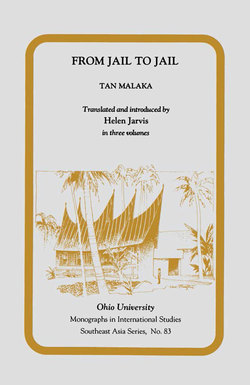Читать книгу From Jail to Jail - Tan Malaka - Страница 17
На сайте Литреса книга снята с продажи.
ОглавлениеChapter 3
THE RIGHT TO SELF-PRESERVATION
[13] It does not take long to understand that the negative right to self-preservation and the positive right to earn a living, both guaranteed by the state, are really two aspects of the same principle. There is no use having an abundance of delicious food, clothing suitable for both hot and cold weather, mattresses, blankets, and mosquito nets if self-preservation is not guaranteed. As the proverb goes, “rice tastes like chaff and water like thorns”; one sleeps uneasily when afraid of danger.1
Slaves in the Greek and Roman era were often treated well enough, frequently becoming overseers of businesses or teachers for children of the rich. But even so they were not secure and able to consider themselves full human beings. The kind-hearted master might the next day fall into poverty or die, and the slave might be transferred to a new owner. Slaves had no rights at all and were not protected by the laws of the state. They could be bought or sold just like goods, could be worked continuously or even beaten to death. There was no person, group, or political body to protect them.
In feudal times a serf could no longer be bought and sold. Serfs were tied to the land of their masters and worked for them. Of the fruit of their labors they were permitted to retain only enough for their family’s daily needs on the level of slaves, that is, just like beasts of burden. The taxes on French serfs were very heavy: of their product 14 percent had to be paid to the aristocracy, 14 percent more to the priesthood, and a further 53 percent to the monarchy. The remaining 19 percent could be kept for the family’s daily needs. But what if the harvest failed and the serf had already incurred many debts to buy seed, fertilizer, or other necessities of life?
[14] If I am not mistaken, among the twenty-five million inhabitants of France at the time of the revolution only two hundred thousand, or 1 percent, were in the classes having property and power: the aristocracy and the priesthood. The other 99 percent made up the third estate, which included farmers, workers, and the bourgeoisie (bankers, employers, and traders). The priest Sieyes, who played a large part in the first act of the French Revolution of 1789, had a precise and concise way of expressing the situation:
“What is the third estate?”—“Everyone.”
“What have they been until now?”—“Nothing.”
“What do they want?”—“Everything.”
The third estate pushed for, struggled for, and won recognition of Les Droits des Hommes, which still today represent a touchstone in the struggle for human rights.
The struggle to seize individual rights in both their positive and negative forms—as the right to earn a living and the right to protection by the laws of the state—has long reverberated, particularly in the Western world. Demands for these rights were made long ago by the rural proletariat against the patricians, the Roman landowners who were led successively by the two Gracchi and by Catalina, and later by the German rural and industrial proletariat. But in both Rome and Germany the instruments of production and the social relations of the old society were still strong and could not yet be overthrown. In addition, the new means of production were not yet strong enough to replace the old.
In France feudal society was in total ruins and was no longer able to hold out. The existing means of urban and rural production were shackling society’s strong new class—the bourgeoisie, with the help of the proletariat. Striking contradictions raged in every field: economics, politics, social and cultural affairs, and, last but not least, the field of self-preservation. The extraordinary rights of those holding power could be used at any time and against any citizen. With a lettre de cachet and without charges of having violated definite and predetermined laws, a person who was not liked could be arrested at any time and held in jail for as long as those in power desired. Frequently people who had done nothing wrong throughout their entire lives were confined in small, dark, and dirty cells.
[15] In investigations of committed violations, the accused could be tortured in many ways: by being beaten or by having their limbs squeezed between iron bars, their fingers pierced, and hot coals placed in their mouths until they were forced to confess. Such confessions frequently resulted solely from an inability to stand the torture, and not from any real guilt.
Punishments were meted out at the whim of the judge. Many of the punishments imposed on innocent people were no less severe than those dealt out by the Japanese Kenpeitai.2 Before the French Revolution, people could be tortured, quartered by horses, drowned, or burned alive. With the destruction of the Bastille, however, all such arbitrary arrests, investigations, and punishments came to an end. The Bastille, a prison in the center of Paris and a symbol of the arbitrariness of feudalism, was razed by the revolutionary masses.
The uprooting of feudal society ended the many perils that could threaten a citizen at any time. With the destruction of the French feudal system the rights to individual security guaranteed by the laws of the state were born.
